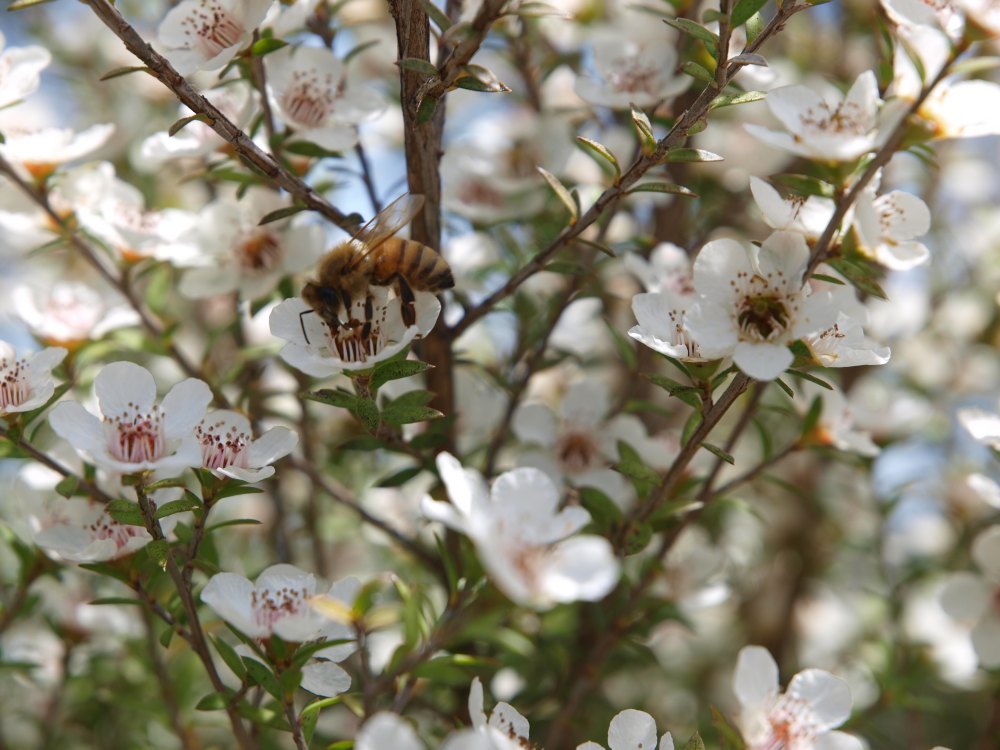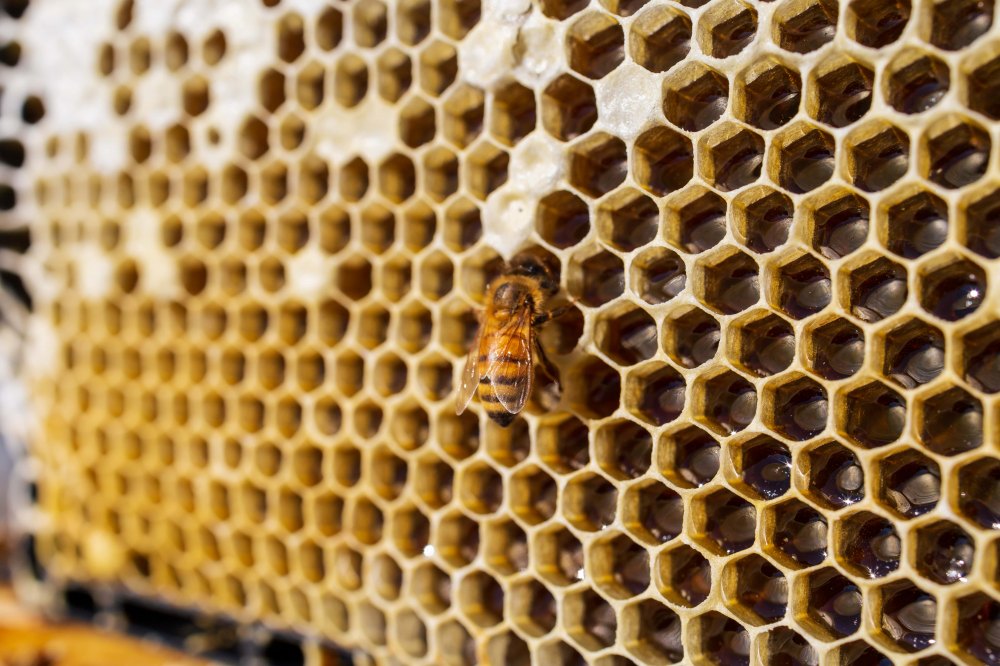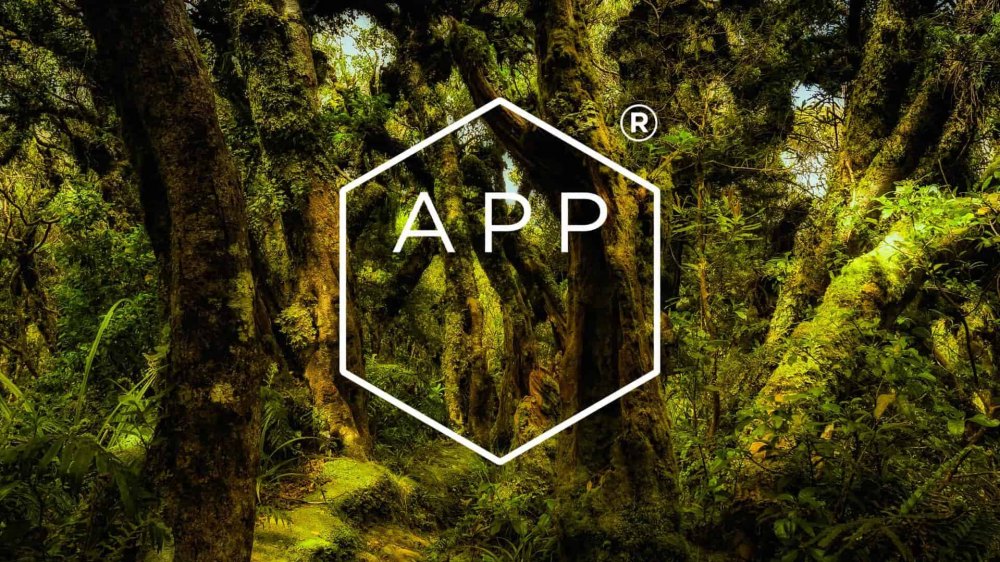
Independently tested and certified
All our honey products at Zealandia Honey® are tested for potency, quality and purity from raw material to finished product by accredited laboratories before they are exported.

The magic component
Methylglyoxal
The Power Of Mānuka.
Methylglyoxal is unique to honey from the Mānuka flowers. It has properties that are known around the world and has been used by Māori people of Aotearoa for centuries.
Certified MGO Rating
In Mānuka honey, MGO forms during the maturation of our honey from the conversion of another compound dihydroxyacetone (DHA). It's the magic component that is only found in the nectar of Mānuka flowers.
The leptospermum scoparium, also called tea tree of Mānuka tree grows uncultivated throughout the New Zealand landscape. Due to the difficulties of finding high density Mānuka trees in nature the supply of high-grade Mānuka honey is low and the worldwide demand is high.
Methylglyoxal is unique to honey from the Mānuka flowers. It has properties that are known around the world and has been used by Māori people of Aotearoa for centuries.
Certified MGO Rating
In Mānuka honey, MGO forms during the maturation of our honey from the conversion of another compound dihydroxyacetone (DHA). It's the magic component that is only found in the nectar of Mānuka flowers.
The leptospermum scoparium, also called tea tree of Mānuka tree grows uncultivated throughout the New Zealand landscape. Due to the difficulties of finding high density Mānuka trees in nature the supply of high-grade Mānuka honey is low and the worldwide demand is high.
Trusted rating system
Our unique hexagon design provides you with all the details you need in one simple design, for MGO this trusted mark indicates that the amount indicated in the hexagon is independently verified by third party laboratories and ensures the contents that determine the value of your honey.
MGO has been trusted by consumers around the world as the most transparent and trusted rating system indicating the amount of Methylglyoxal in milligrams per Kilogram in your honey.
MGO has been trusted by consumers around the world as the most transparent and trusted rating system indicating the amount of Methylglyoxal in milligrams per Kilogram in your honey.

Ministry of Primary Industries (MPI)
Science definition
According to the science definition determined by the Ministry of Primar Industries your honey would have to have a combination of five attributes, four chemicals and one DNA marker. These are the requirements to authenticate monofloral and multifloral Mānuka honey and can be identified by using two laboratory tests.
To qualify as a mono floral Manuka Honey the test requires all of the five attributes. If the honey fails to meet 1 or more of the attributes, it is not monofloral Mānuka honey.
3-Phenyllactic acid At a level greater or equal to 400 mg/kg
2-Methoxyacetophenone At a level greater or equal to 5 mg/kg
2-Methoxybenzoic acid At a level greater or equal to 1 mg/kg
4-Hydroxyphenyllactic acid At a level greater or equal to 1 mg/kg
Once the chemical attributes are confirmed in your honey we confirm the amount of DNA from Mānuka pollen in our honey. The minimum amount of DNA that has to be present for honey to be called Mānuka honey is at least 3fg/uL.
To qualify as a mono floral Manuka Honey the test requires all of the five attributes. If the honey fails to meet 1 or more of the attributes, it is not monofloral Mānuka honey.
3-Phenyllactic acid At a level greater or equal to 400 mg/kg
2-Methoxyacetophenone At a level greater or equal to 5 mg/kg
2-Methoxybenzoic acid At a level greater or equal to 1 mg/kg
4-Hydroxyphenyllactic acid At a level greater or equal to 1 mg/kg
Once the chemical attributes are confirmed in your honey we confirm the amount of DNA from Mānuka pollen in our honey. The minimum amount of DNA that has to be present for honey to be called Mānuka honey is at least 3fg/uL.
Polyphenols in Honey
As plants are immobile, often they encounter potential enemies such as herbivores, predators, microbes, viruses, or competing plants. Added to this, they face abiotic stress conditions such as salt, draught, or high intensity light. Naturally plants need a defence mechanism or a group of compounds to fight against above.
The APP® association's goal is to identify measurable polyphenols , that end up in food products through plants, and then classify them as Active Polyphenols. Plant produce polyphenols using metabolites generated from the pathways of primary metabolism such as Photosynthesis, Glycolysis, and Krebs cycle.
The APP® association's goal is to identify measurable polyphenols , that end up in food products through plants, and then classify them as Active Polyphenols. Plant produce polyphenols using metabolites generated from the pathways of primary metabolism such as Photosynthesis, Glycolysis, and Krebs cycle.
